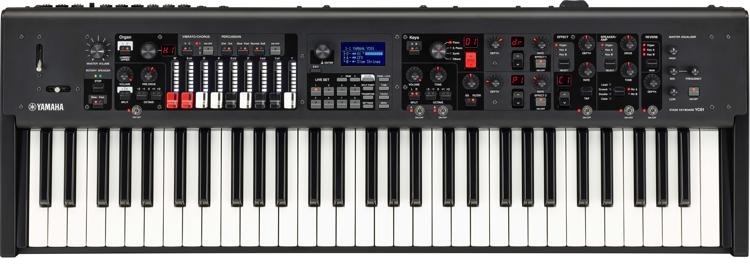I just finished watching the “Yamaha Stage Keyboard YC61 Development Story” on Youtube. It’s a twelve minute video of three developers behind the new YC61 organ:
- Takashi Mori – Sound Synthesis Algorithm
- Toshifumi Kunimoto – Sound Synthesis Algorithm
- Akinobu Shibuya – Software Engineering
Dr. K, of course, is well-known for his work in physical modeling and Virtual Circuit Modeling (VCM). Both types of modeling are essential to the YC61 sound.

The developers knew that physical modeling and VCM would be important during development. They began by studing real-world instruments to find the best way to deploy these techqniues. They eventually arrived at an implementation which unifies physical modeling and VCM — the whole is greater than the sum of the parts.
Quoting sensei Dr. K, “Real instruments feature a lot of undulation” not just pure sine waves. “While collecting a range of different pitch waveforms, combining them, and including some non-linear additions, we also had to deal with phase interference between them. It turns out that this interference is not constant, and while balanced over the entire pitch of the instrument, the pitches do shift in subtle and inconsistent ways. … [T]his disordered yet harmonious behavior” is essential and necessary.
“Real sounds are affected [by] a lot of instability in circuits and component devices, and sampling alone — which is the equivalent of taking a static photo in the audio sense — could not be used to replicate these instabilities.”
Rock players, in particular, know that good overdrive is essential to the Hammond sound. “When the expression pedal, for example, is pressed down hard, the distortion component can become an exquisite noise.” Virtual Circuit Modeling has a role here.
Rotating speaker emulation is also a suitable role for VCM. However, VCM alone is not enough. Physical modeling is needed to capture the properties of rotating speakers including the acoustics and physics of sound reflection. “The noise component of an organ’s sound is really effective when combined with the rotary speaker.”
Existing Yamaha instruments use a separate AWM2 tone generator and an effects section. The YC61 takes a unified approach and combines tone generation with effects to produce an accurate, overall sound.
The character of real world instruments changes from day to day with temperature and other factors. The developers needed to study materials and the effect of those materials on the behavior of electrical circuits. They measured actual organ circuits and tried to understand how materials and other factors affected their sound.
The organ sound in seventies British prog rock was a key influence. They wanted to achieve an overall musical sound. The developers wanted to create an instrument which organists could play naturally and intuitively. The instrument itself should reveal its “amazing sounds” when it is simply played “without any upfront explanation.”
Well, most of us must wait until June 2020 to play and to decide for ourselves. The YC61 is expected to be in stores by then, costing $2,499 (MSRP) and $1,999 on the street (MAP).
The YC61 is slightly smaller than the MODX6 and just a touch heavier (15.6 pounds). Given the range of non-organ sounds, I’ll be giving the YC61 a serious try when it’s available. Maybe it’s time to trade in the old NE2?
Copyright © 2020 Paul J. Drongowski
